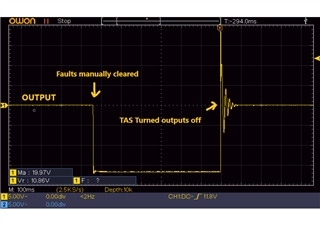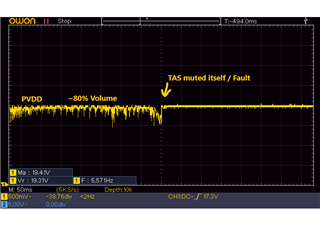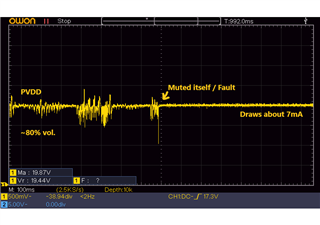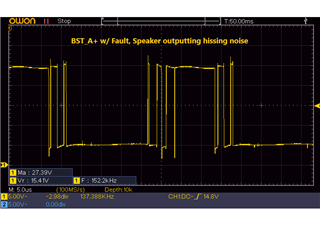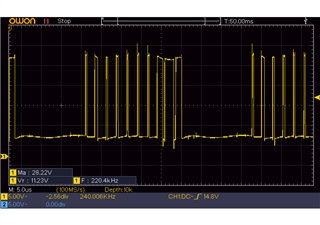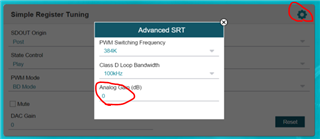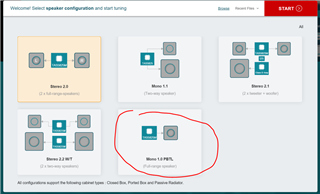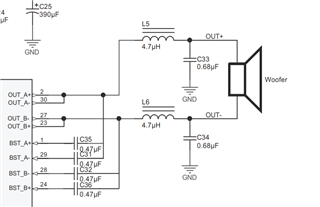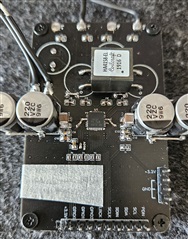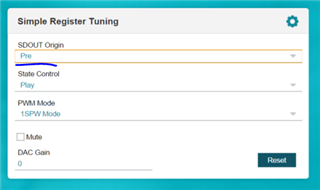Other Parts Discussed in Thread: TAS5766M, TAS5828M, TAS5825P
Hi:)
-
I'm having some trouble while prototyping with the TAS5825M. When playing at normal volumes everything works as expected, but when the volume is increased above ~80% it instantly mutes or sends huge amounts of voltage through my speaker. I've noticed this can happen more when PVDD is higher than about 16V.
When this happens it shows different faults each time, alternating between;
CH1-DC=1 // CH1-OC=1 // CLK-Fault-i=1 // Or it shows no faults but sends about 10-80% of the supply voltage to the speakers.
-
My setup is as follows:
TAS5825M is in Mono-Mode (PBTL), 384KHz fs, PVDD is supplied with 18V (20V max), DVDD is 1.8V, driving 2.6Ohm. I'm trying to reach about 40W RMS.
-Bootstrap caps: 470nF
-Bulk Caps (PVDD): 3x 220uF Low-ESR.
-Ceramic Caps (PVDD): 4x 4.7uF, + 2x 1uF, + 2x 100nF (Placed close to IC)
-Inductor: 10uH (PN: HA4158-EL) + 0.68uF
everything else is as datasheet suggests.
-
What could be the cause of this? Any advice is greatly appreciated:)
Thanks!


